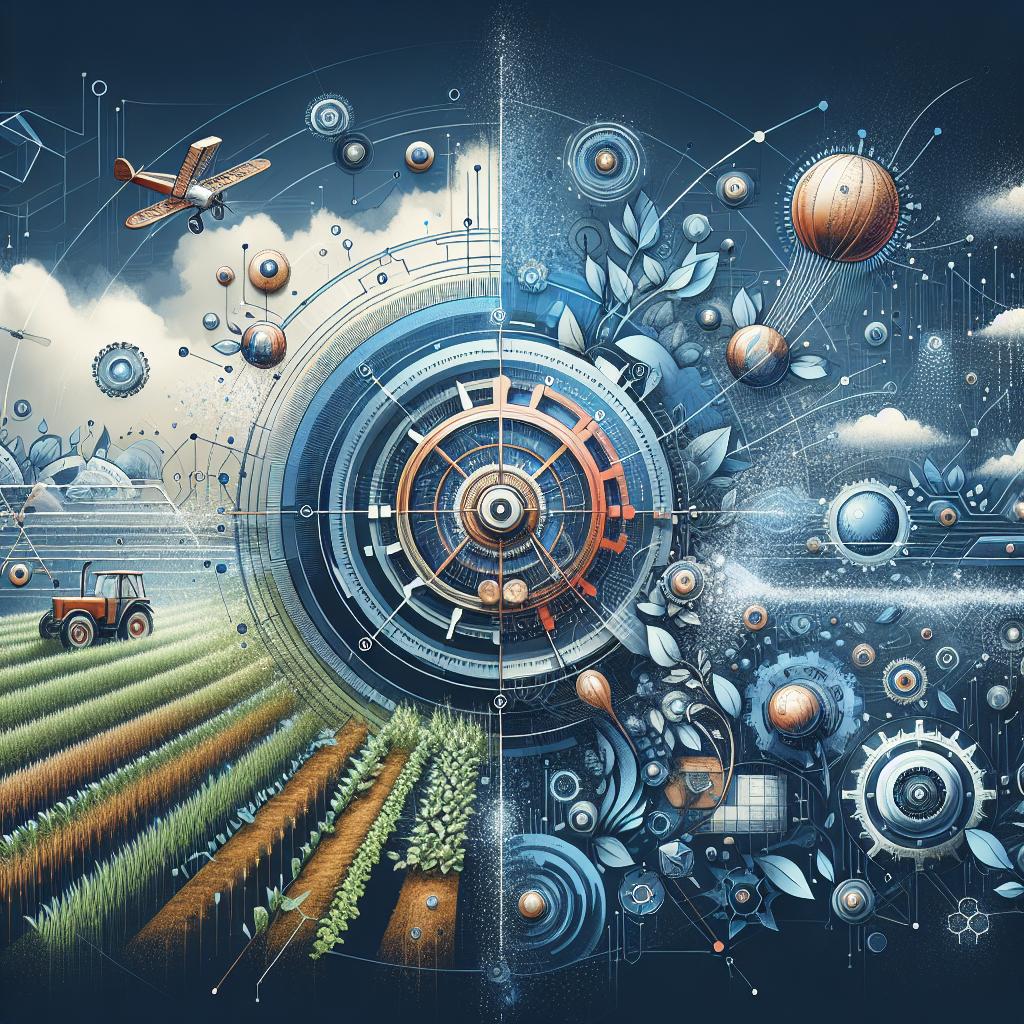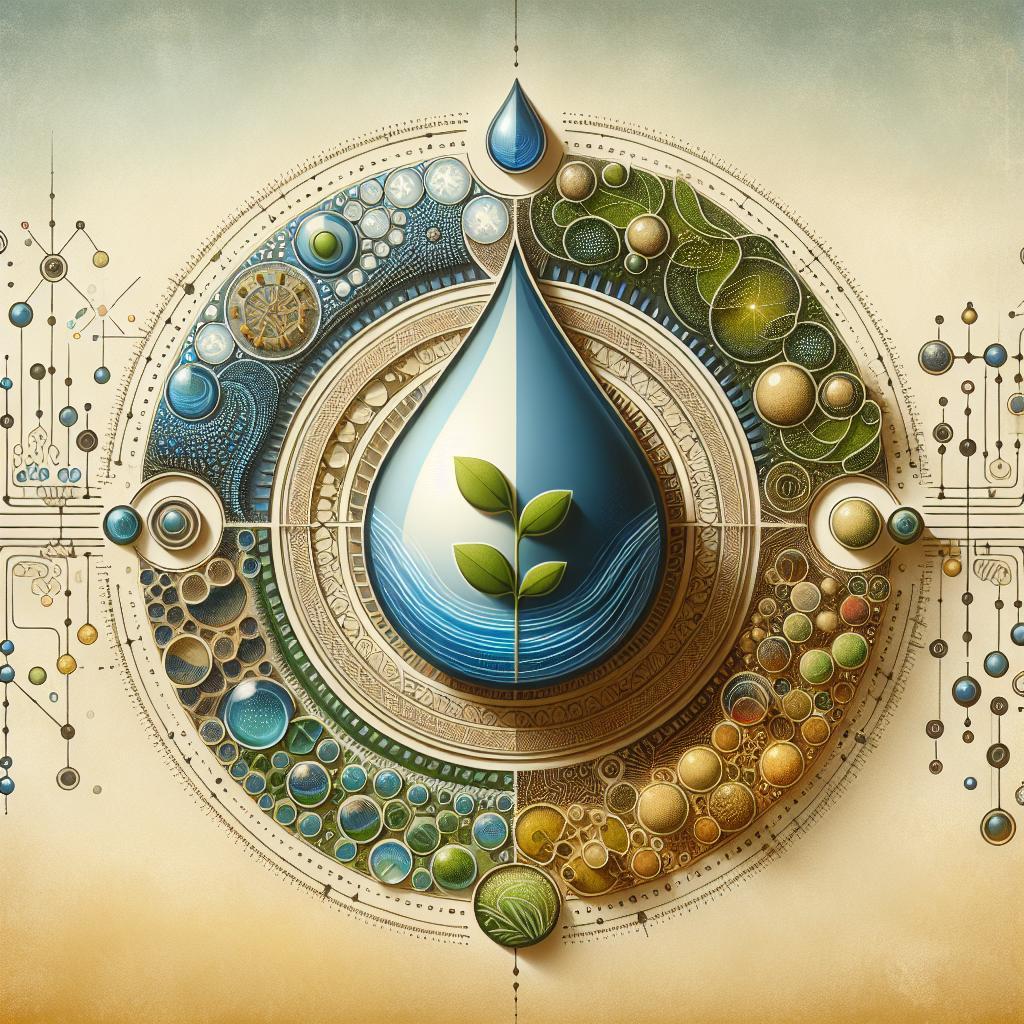This post may contain affiliate links which means I may receive a commission for purchases made through links. Learn more on my Private Policy page.
Introduction:
In the vibrant tapestry of agriculture, where nature’s bounty meets the art of cultivation, one silent hero quietly plays a crucial role in ensuring our crops thrive: irrigation. Picture a sunny day in the fields, where plants stretch toward the sky, their leaves shimmering with life. Beneath the surface, however, a battle is waging—one that involves not just the nourishment that water provides, but also the protection against diseases that threaten to undermine the farmer’s toil. As we delve into the intricate relationship between irrigation and disease management, we’ll uncover how this vital practice not only quenches plants’ thirst but also acts as a frontline defense against pathogens and pests. Join us on this journey through the fields, as we explore the pivotal role of irrigation in safeguarding our harvests and, ultimately, our food security. Whether you’re a seasoned farmer or an enthusiastic home gardener, understanding this connection might just change the way you see your garden grow!
The Watering Wisdom: How Irrigation Shapes Crop Health
Effective irrigation is not merely a means to provide plants with the moisture they need; it also plays a crucial role in managing crop health and mitigating diseases. By ensuring that crops receive just the right amount of water, farmers can create an environment that discourages the growth of harmful pathogens. Implementing practices such as:
- Drip Irrigation: Targets root zones and conserves water, minimizing excess moisture on foliage.
- Scheduling: Watering at the right times can prevent disease development from prolonged wet conditions.
- Soil Moisture Monitoring: Allows for precise irrigation management, reducing the risk of root rot and other water-related issues.
Furthermore, proper irrigation techniques can promote stronger plant health, which in turn boosts their natural defenses against diseases. Fertile soil coupled with adequate moisture leads to robust crop growth. Take a look at the following table, which highlights the correlation between irrigation methods and crop resilience:
| Irrigation Method | Crop Resilience Level |
|---|---|
| Drip Irrigation | High |
| Surface Irrigation | Medium |
| Flood Irrigation | Low |
As we continue to explore the interplay between irrigation and crop health, it becomes increasingly evident that strategic water management is a vital component of sustainable agriculture. Farmers investing in smart irrigation practices not only safeguard their yield but also contribute to the overall vitality of our food systems.

Drenching Pests and Boosting Resilience: Irrigations Role in Disease Prevention
Irrigation plays a pivotal role in crop management, particularly when it comes to enhancing plant resilience against diseases. By supplying consistent moisture, well-managed irrigation systems can minimize stress on crops that often leads to vulnerability. Effective water management can help in the following ways:
- Reducing Soil Saturation: Proper irrigation avoids waterlogged conditions that can create a breeding ground for pathogens.
- Promoting Healthy Growth: Adequate moisture ensures robust plant development, making crops less susceptible to diseases.
- Timing of Irrigation: Irrigating during the cooler parts of the day can reduce evaporation and disease spread, creating an unfriendly environment for pathogens.
Moreover, certain irrigation strategies, like drip irrigation, can directly target plant roots while keeping foliage dry, which is crucial in preventing foliar diseases. Implementing these systems allows farmers not only to optimize water use but also to implement a proactive defense against potential outbreaks. Below is a simple overview of irrigation methods and their respective benefits:
| Irrigation Method | Benefits |
|---|---|
| Drip Irrigation | Minimizes water waste, reduces fungal diseases |
| Sprinkler Irrigation | Uniform coverage, good for large fields |
| Surface Irrigation | Cost-effective, suitable for various terrain types |

Smart Scheduling: Timing Your Irrigation for Maximum Crop Protection
Efficient irrigation scheduling is crucial for maintaining plant health and mitigating the risk of disease. By aligning irrigation times with weather patterns, plant growth stages, and soil moisture levels, farmers can significantly reduce the conditions that foster pathogen development. Consider the following strategies for optimizing irrigation timing:
- Morning Watering: Watering early in the day allows excess moisture to evaporate before cooler nighttime temperatures, reducing humidity around the plants.
- Soil Moisture Monitoring: Utilize sensors and moisture gauges to determine the optimal irrigation timing based on real-time data.
- Crop Growth Stage Awareness: Adjust irrigation schedules based on the different needs of plants during their growth phases to minimize stress and disease susceptibility.
Incorporating a strategic approach to irrigation can bolster crop resilience against diseases. For instance, by employing a rain gauge and forecasting models, farmers can anticipate rainfall and adjust their irrigation practices accordingly. Here’s a simple overview of how timing impacts disease prevalence:
| Timing | Disease Risk |
|---|---|
| Early Morning | Low |
| Midday | Moderate |
| Late Afternoon/Early Evening | High |
By making informed decisions regarding irrigation timing, farmers not only conserve water but also create a less favorable environment for pathogens, fostering healthier crops and potentially higher yields.

Harnessing Technology: Innovative Irrigation Solutions for Disease Control
As agriculture continues to embrace advancements in technology, innovative irrigation solutions are proving to be game-changers in the quest for effective disease management. By utilizing precision irrigation systems, farmers can provide the exact amount of water needed for crops, significantly reducing the risk of water-related diseases. Drip irrigation, for instance, delivers water directly to the roots, minimizing leaf wetness and thereby decreasing the likelihood of fungal infections. Smart irrigation controllers, equipped with sensors and weather data, can adjust watering schedules in real time, ensuring that plants receive moisture when they need it most, without excess that could foster disease. This strategic approach not only boosts crop health but also enhances water efficiency, making it an environmentally friendly option.
Moreover, the integration of data analytics and remote sensing technologies into irrigation practices can help in early disease detection and prevention. By analyzing humidity levels, soil moisture, and plant health metrics, farmers can identify areas at risk long before visible symptoms appear. Implementing these tools can lead to prompt intervention, such as targeted fungicide applications or adjusted watering regimes, tailored to specific areas of a field. The following table illustrates the benefits of innovative irrigation technologies in disease control:
| Technology | Benefits |
|---|---|
| Drip Irrigation | Minimizes leaf wetness, reducing fungal infections |
| Smart Controllers | Adapts watering schedules based on real-time data |
| Data Analytics | Enables early detection of disease risk |
| Remote Sensing | Monitors plant health and moisture levels from afar |
In Conclusion
As we draw the curtain on our exploration of the vital link between irrigation and crop disease management, it’s clear that water is not just the essence of life; it’s a key player in the health of our fields. Just as a gardener tends to their blossoms, so too must we nurture our crops with a thoughtful approach to irrigation. By balancing moisture levels, we can create an environment that fosters growth while warding off the specters of disease.
So, the next time you gaze upon a field shimmering in the sunlight, remember the hidden dance of hydration and health that unfolds beneath the surface. With the right irrigation strategies, we can cultivate not only bountiful harvests but also resilient ecosystems. Let’s celebrate the wonders of nature and the science that helps us work hand in hand with it, ensuring that our crops flourish today and for generations to come. Here’s to the art of irrigation—may it continue to quench our crops’ thirst and protect their vitality in the seasons ahead! Happy farming! 🌱✨
This post may contain affiliate links which means I may receive a commission for purchases made through links. Learn more on my Private Policy page.

